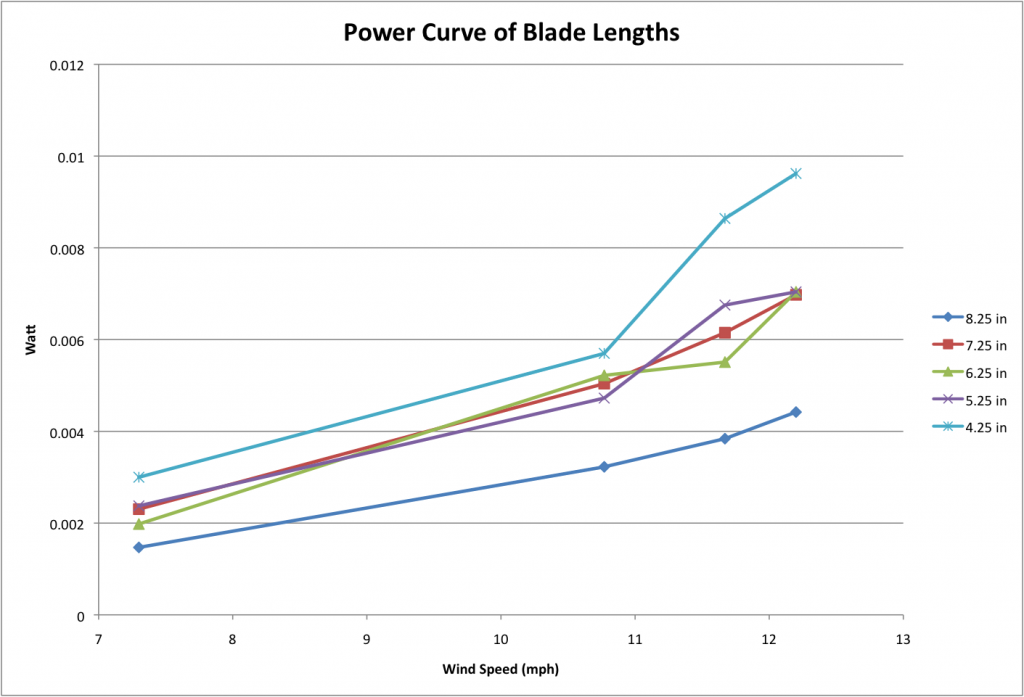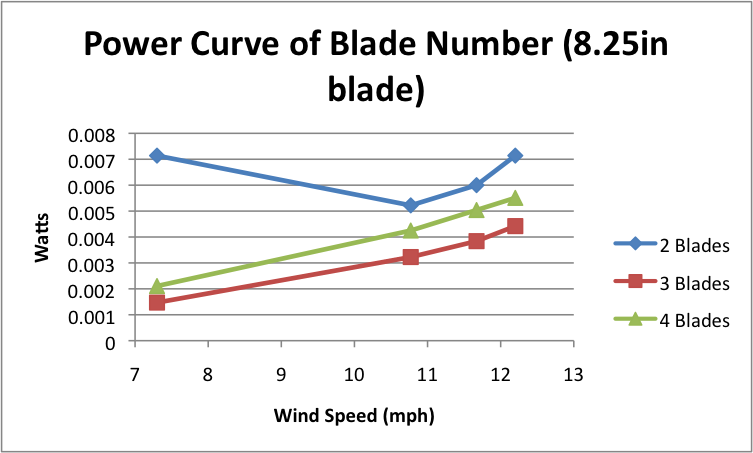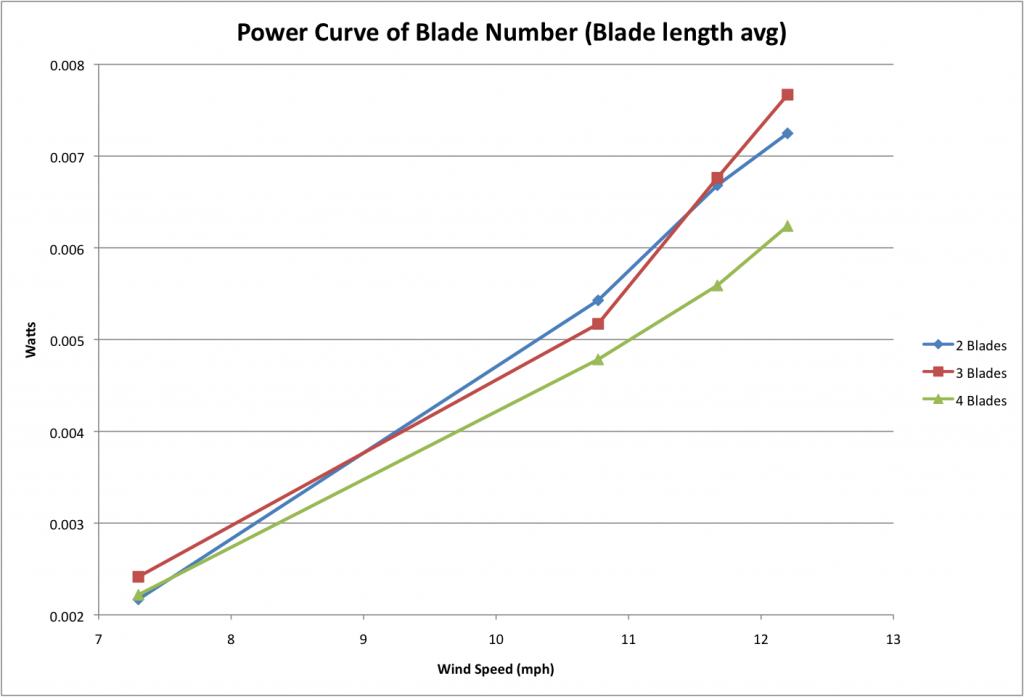Wind Turbine Data Analysis
By: Cameron Fowler, Donovan Dowers,
Harris Gordon, Brendan Cook, and Julian Cortez
Objective:
Analyze the power generated from varying blade lengths as well as varying number of blades.
Procedure:
The blade design utilized in this experiment was a rectangular shape with width of 2in. and length varying between 4.25in and 8.25in. During testing, blades were kept at an angle of 15 degrees. After calibrating the fan for various wind speeds, blades were tested at four wind speeds: 7.3, 10.77, 11.67, and 12.2 mph. A power reading was measured at each speed, and it is used in the following analysis to demonstrate the varying powers obtained from different configurations.
Data:
Surprisingly, our data shows that smaller blades are able to produce larger amounts of power. The extremes of size show that the 4.25 in. blade are capable of producing greater amounts of energy at all wind speeds; whereas the largest blade of 8.25 in. produced the least power throughout. The three blade sizes in the middle are less conclusive and powers fluctuate above and below each other at different speeds.
The data gathered for the power curve of the 8.25 in. blade is inconsistent with the rest of the data, and it is removed from the following averages for the power curves comparing power produced from varying blade lengths.
This data is again surprising. The data shows that 4 blades actually produce less power at varying wind speeds, especially at higher wind speeds. The power for the two and three blade turbines fluctuate with the three-blade system producing more power at low and high speeds and the two-blade system producing the most power at the middle speed of 11.67 mph.
Conclusions
It is surprising to find that experimentally more power is obtained from smaller blades and less of them. This is surprising because the power available from the wind increases with the area of the wind swept through by the turbine blades. Ideally, one would then believe that bigger blades are better; however, our data shows that this is not the case. One possible explanation is that the longer blades are heavier and more difficult to spin. Consequently, more of the wind’s energy must be used to spin the blades themselves. The smaller blades have smaller moments of inertia and the wind can easily spin them allowing larger amounts of power to be obtained. This is also a possible explanation for the increased power from fewer blades. Fewer blades need less torque to spin them, and thus they generate more power. Another possibility is that the longer blades reach far enough out that they are close to the boundary layer of the sides of the box. This greatly limits the wind speeds reaching the tips of the blades. Perhaps different and more conclusive data may be gathered in the future by allowing the wind speed to go to even higher levels. Also the data could be improved by a more efficient system that had less friction forces, turbulence, and wobble.



2 Comments
go to website posted on May 24, 2013 at 7:54 am
I don’t even know how I ended up right here, however I believed this put up was once good. I don’t recognise who you might be however definitely you are going to a famous blogger should you aren’t already 😉 Cheers!
Jamie Wright posted on March 13, 2015 at 5:37 am
Hey dude, sick graph work.